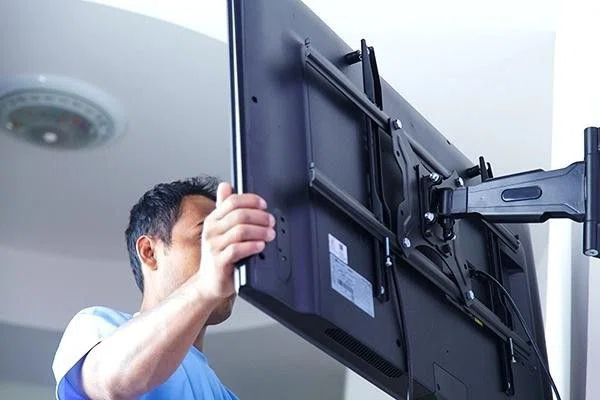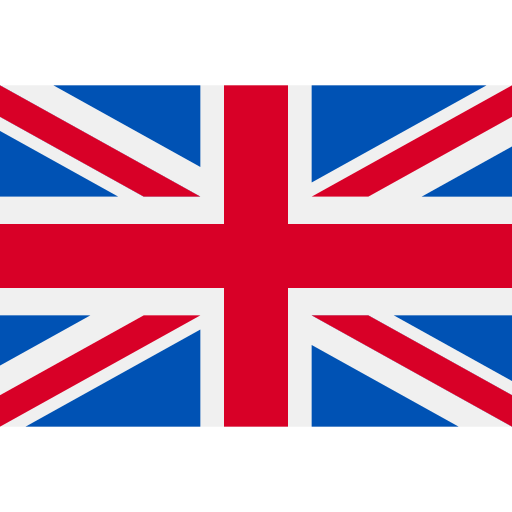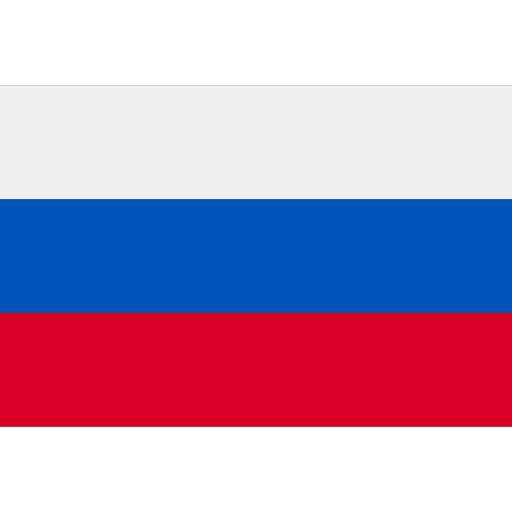
How to Hang a TV on the Wall Properly: Tips and Instructions
Learn how to choose and install the right TV wall mount. This detailed instruction will help you avoid errors and problems during installation. Learn how to size the mount, prepare your tools, and safely mount your TV to a concrete or wood surface. Don't risk a dangling TV - follow this simple guide or ask the professionals for help.
Content
- Step #1: Buying a mount
- Step #2. Preparation of tools
- Step #3. Marking the place for the bracket
- Step #4. Drilling a hole in the wall
- Step #5. Installing the bracket
- Safe and secure wall mounting of your TV: call a professional craftsman
- Frequently Asked Questions
- How do I choose the right mounting system for my TV?
- How to install a TV on a drywall wall?
- Can I install the TV on the wall myself without the help of a professional?
- Do I need to make holes in the wall when installing a TV on a movable mount?
- How do I secure wires and cables when mounting my TV on the wall?
- Can a TV fall off the wall?
- How do I check the level of horizontality after mounting the TV on the wall?
When you decide to hang a TV on the wall, all sorts of difficulties and surprises can arise. Sometimes you choose the wrong mounting system or install it incorrectly, and as a result, the TV hangs crookedly or even threatens to fall. And it also happens that the holes in the wall are drilled the wrong way, and now you have to smear them with plaster or even do it all over again.
We will tell you how to choose the right mount for a TV on the wall and how to hang it with your own hands on a concrete or wooden surface. And, believe me, there are not many differences in the order and technology of work here, it is important only to choose the right fasteners depending on the material of the wall.
Step #1: Buying a mount
When choosing the right TV mount, it is important to consider the size of the TV, as mismatched holes on the mount and the device may prevent it from being securely mounted.
In order to purchase the right TV wall mount for your TV, you need to determine the size of your screen. The more inches your TV has, the larger the bracket you will need.
There are several ways to determine the diagonal of your display:
- Check the TV's instruction manual. It often indicates the size of the screen and the recommended mounting type.
- Check the back of the TV for a sticker with screen specifications. This can be information about the diagonal size or general characteristics of the TV.
- Go to the manufacturer's official website and find the model of your TV. There you will usually find detailed specifications, including screen size.
If none of the above methods work, you can measure the diagonal of the display yourself. To do this, take an ordinary tape measure and measure the distance from one of the bottom corners to the opposite top corner diagonally, as shown in the photo below. The resulting measurement values need to be converted to inches.
Once you know the screen size, you can go to the store and purchase a suitable mount. On the package of the mount is usually indicated for TVs with what diagonal size it is designed for. Also, do not hesitate to ask for help from sales consultants who will help you choose the right mount for your TV.
When choosing a TV mount, it is important to consider that wall mounts are suitable for different types of screens including LCD TVs, plasma panels and others. This is a general requirement that can be kept in mind when making a purchase.
Mounting your TV on the wall offers many benefits, including saving space in the room and improved viewing angles. It also allows you to create an aesthetically pleasing interior by freeing up the surface of a table or nightstand.
An optimally chosen mount will keep your TV securely in place and protected from drops or damage. Different types of mounts, such as tilt, swivel or fixed, allow you to customize the position of your TV to your liking, ensuring optimal viewing comfort.
Don't forget to also ensure that the mount is properly installed on the wall. If you're unsure of your abilities, it's advisable to call in the professionals to ensure that the installation is done safely and correctly.
Step #2. Preparation of tools
The process of mounting a TV bracket on the wall requires following a number of preliminary steps and using the necessary tools. It is important to have the following tools and materials on hand:
- Electric drill with impact function and 8 mm drill bit are designed for drilling holes in concrete walls. If you have to work with a wooden wall, it is recommended to use a screwdriver. Interesting fact: The impact mode of the electric drill allows you to effectively overcome the stiffness of concrete, ensuring high-quality drilling of holes.
- A construction level is an important tool to ensure a level placement of the TV on the bracket. Interesting fact: During the installation process, the level helps to avoid tilt or curvature of the TV, providing a comfortable visual experience when using it.
- A regular pencil is needed to mark where the holes are drilled and the bracket is installed. Interesting fact: Pencil is a universal tool used in various areas of construction and repair, helping to accurately mark the necessary places for subsequent actions.
- To fix the bracket on a concrete wall requires the use of dowel nails with a diameter of 8 × 60 mm. In case of working with a wooden wall, it is recommended to use self-tapping screws with a length of 60 to 80 mm.Interesting fact: Dowel nails are reliable and durable fasteners that provide a secure fixing of the bracket on concrete surfaces, and self-tapping screws provide strength and reliability of fixing on wooden surfaces.
- The hammer is used to drive dowel nails into concrete walls. Interesting fact: The hammer is one of the oldest tools, which was used in ancient times. In modern construction, it remains an indispensable tool for hammering fasteners and other work.
Step #3. Marking the place for the bracket
When starting to mark out a place to mount your TV bracket, it is important to consider a few key aspects that will ensure the quality and safety of your device. Choose a suitable location on the wall, taking into account the optimal viewing angle, viewing comfort and mounting safety.
First of all, it is recommended to conduct a thorough inspection of the wall to ensure that it is secure and able to support the weight of the TV and mounting bracket. Pay attention to the wall material and its structural integrity.
Place the bracket against the selected location on the wall and make sure it is level using a construction level. This will help prevent the bracket from tilting or unevenly loading, ensuring that the TV is level and stable.
For best results, make marks on the wall indicating where the bracket will be mounted. It is recommended that you use a simple pencil for this operation, as it allows you to easily make adjustments or changes to the positioning of the mount if required.
It is important to remember that the optimal height to place the TV will depend on the user's preferences and viewing conditions. It is recommended to place the TV at eye level to ensure the most comfortable viewing experience while minimizing strain on the neck and eyes.
In addition to this, you may be interested to know that some modern brackets have additional features that can provide even more convenience. For example, some models have tilt and swivel capabilities, allowing you to easily customize the viewing angle to your preference. There are also mounting systems with reinforced construction that are specifically designed for large and heavy TVs, providing additional reliability and security.
Step #4. Drilling a hole in the wall
After making the markings on the wall, carefully remove the bracket to the side. Now, before drilling each individual hole, it is recommended to make a small preliminary preparation to ensure the accuracy and safety of the process. For this purpose, you can use a special tool called an awl, but if it is not at hand, an ordinary self-tapping screw will do.
Next, carefully drill four holes in the wall. It is important not to penetrate deeper than necessary for the intervention of dowel nails, otherwise they may not be securely fixed in the selected places. If you want to designate the necessary depth of drilling, it is recommended to use a marker and mark the appropriate level on the drill.
When working with a wooden wall, it is still worthwhile to perform preliminary preparation of future holes to avoid the possibility of self-tapping nails to deviate to the side.
The process of drilling holes in the wall is an important stage of many construction or decorative works. It allows you to securely fix various elements such as shelves, hooks, hanging structures and much more. Moreover, there are a number of specialized tools designed specifically for these tasks.
For example, for drilling holes in concrete or brick walls, perforators or impact drills are used to easily overcome hard materials, ensuring accuracy and efficiency. When working with softer materials such as wood or drywall, regular electric drills or screwdrivers equipped with special drills can be used.
It is important to remember safety when drilling. Always wear safety glasses to protect your eyes from dust and splinters, especially when working with hard materials. It is also recommended to wear protective gloves to prevent possible damage to the skin on your hands.
Don't forget that choosing the right tool and drill bit is an important aspect of successfully drilling holes in the wall. Consult professionals or experts at building material stores to get recommendations on the right tool for your specific task.
Beyond simple recommendations, it is also possible to use specialized templates or levels to ensure that the holes you drill are accurate and parallel. These tools can help you create neat and professional-looking fortifications or installations, whether in the home, office or other spaces.
Step #5. Installing the bracket
When installing a bracket and hanging your TV, there are a few important things to consider. It is important to know that choosing the type of wall on which you plan to mount the bracket plays an important role in the installation process.
Let's take a look at the different types of walls and the corresponding methods of mounting the bracket. If you have a wooden wall, screwdriver self-tapping screws are the perfect choice for mounting the bracket. Just screw them into the wall and the installation will be considered complete. All you will have to do is hang the TV and enjoy your viewing experience.
However, if you have a concrete wall, the bracket installation process is slightly different. In this case, you will need to use wall plugs. Before you start the installation, you will need to put the bracket on the prepared holes and hammer dowels into them. The dowels will secure the bracket and prevent it from moving freely.
Once the dowels are in place, the next step is to secure the bracket. You can use nails to secure it into the dowels. If you prefer the other option, you can use a regular Phillips screwdriver or screwdriver to screw in the nails. This is especially handy if you don't want to use a hammer or are afraid of damaging the bracket. Don't worry about the reliability of the installation - the choice of fastening tool will not affect its quality and reliability.
After the bracket installation is completed, it is highly recommended to check its horizontality and verticality with a construction level. If a small deviation from the ideal position is not significant, it is not terrible. Visually it will not be noticeable, and your interior will remain flawless. However, if the deviation is too large, for example, the bubble in the level has gone to one end of the bulb, it may be necessary to putty the holes and re-drill new ones.
Once the bracket has been successfully installed, it's time to hang your TV. Use care and caution when lifting and attaching the TV to the bracket. It is recommended that you ask a friend or family member for help to make sure the process is safe and correct.
Installing the bracket and hanging your TV is a task that can be done on your own. However, always keep safety in mind and follow the instructions given. Improper installation can result in damage to the wall or the TV falling down, which can cause harm and accidents.
It is interesting to note that modern TV brackets offer a wide range of functionality. Some models allow you to rotate and tilt your TV in certain directions to provide the best viewing angle. In addition, some brackets have built-in mechanisms for concealed cable management, making the installation even neater and more aesthetically pleasing.
Depending on your interior and preferences, you can choose the bracket that is perfect for you. Remember to consider the size and weight of your TV when choosing a bracket. This is important to ensure a safe and secure installation.
Safe and secure wall mounting of your TV: call a professional craftsman
If you have doubts about your ability to carefully install the mount or if you do not have the necessary tools, the best solution is to contact specialists engaged in mounting TV brackets on the wall. Their services are offered at a price ranging from 15 to 95 GEL depending on the complexity of the work. The cost of mounting on concrete walls will be higher than on wooden walls. Also take into account that if your TV is large and will require an assistant to hang it, this will also affect the total cost.
To order a master, it is recommended to study the reviews and rating of specialists on the Uslugi.ge platform. This way, you will be able to choose a reliable and experienced professional who will guarantee proper and safe mounting of your TV on the wall.
In addition, there are a number of additional information that you should consider. Securely mounting your TV on the wall is an important aspect that ensures your safety and security of the appliances. A professional craftsman has the necessary skills and knowledge to ensure a strong mount, minimizing the risk of the TV falling and being damaged.
Choosing the right type and size of bracket is also an important aspect that ensures your TV is securely fixed. The craftsman will be able to select the optimal mount, taking into account the wall features and the weight of the TV, which will avoid unforeseen problems in the future.
In addition, professional installation guarantees the aesthetic appearance of your interior. The master has experience working with different types of walls and will be able to install the bracket so that it harmonizes with the design of the room and does not attract unnecessary attention.
Don't forget that entrusting the installation of the TV mount on the wall to a professional means saving your time and avoiding unnecessary hassle. You can be sure of the quality of work and safety of your TV, and enjoy watching your favorite programs and movies, knowing that your equipment is installed correctly and reliably.
Frequently Asked Questions
How do I choose the right mounting system for my TV?
🔍 Choose the right mount for the size and weight of your TV. Consult the manual or manufacturer for recommendations.
How do I mount my TV to a drywall wall?
🔨 When installing on a drywall wall, we recommend using special mounts designed for this type of surface. Make sure the mount is securely fastened to the resistant structure.
Can I install my TV on the wall myself without the help of a professional?
💪 Yes, you can install the TV on the wall yourself by following the manufacturer's instructions and manual. However, make sure you have the necessary tools and knowledge for a safe installation.
Do I need to make holes in the wall when installing the TV on a movable mount?
🔧 Yes, sliding mount installation usually requires holes in the wall. It is important to get the location right and use the right tools to create the holes.
How do I secure wires and cables when mounting my TV on the wall?
🔌 Make sure wires and cables are properly organized and secured to avoid unnecessary strain and damage. Use special cable holders or channels to route them neatly.
Can a TV fall off the wall?
⚠️ Correct and secure installation of your TV on the wall should prevent it from falling off. However, check the mountings regularly and make sure they are securely fastened.
How do I check the level of horizontality after mounting the TV on the wall?
📏 Use a level or a special app on your smartphone to check if the TV is level after installation. If necessary, adjust its position.







4 comments
Log in to leave a comment
В данной статье все достаточно подробно описано - от выбора крепления до необходимых инструментов. Жаль, что не написали, как выбрать стену, все ли материалы подходят на установки крепления?
При желании разместить телевизор на стене сможет любой человек. А, если вы не уверены в своих силах, доверьте это дело профессионалам.
От нас с мужем 5 советов: 1. Прикрепите кабели к телевизору до его установки на стену, чтобы избежать неудобств. 2. Проверьте весовые ограничения кронштейна и удостоверьтесь, что он подходит для вашего телевизора. 3. Используйте дюбели и болты, предоставленные с кронштейном, чтобы обеспечить надежное крепление к стене. 4. Если у вас нет опыта работы с инструментами, лучше обратиться к профессионалам для установки.
Помните, что безопасность и правильная установка телевизора на стену важны для предотвращения несчастных случаев и обеспечения долгой службы вашего телевизора!!!